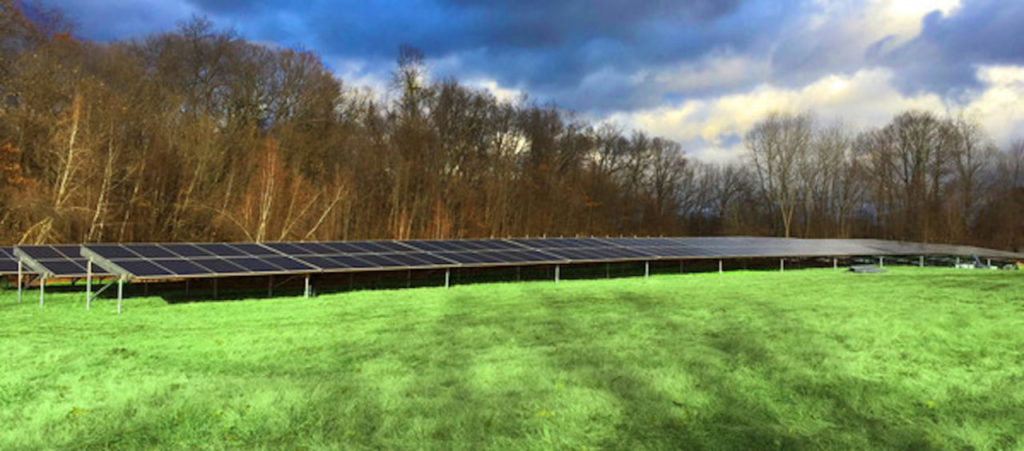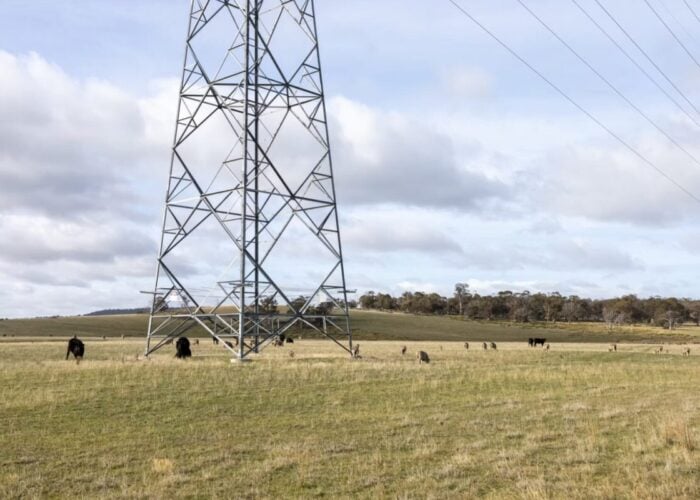
The speed at which renewables projects are being developed in the US has been outpacing works in transmission lines to implement its growth, with hundreds of gigawatts waiting in interconnection queues.
Last year the number of solar PV capacity waiting for grid connectivity in the US rose to nearly 1TW, including the bulk of wind and storage the number rose to 2TW in 2022. A problem that is more than likely to increase in the coming years with more and more projects facing increased delays or being abandoned.
Unlock unlimited access for 12 whole months of distinctive global analysis
Photovoltaics International is now included.
- Regular insight and analysis of the industry’s biggest developments
- In-depth interviews with the industry’s leading figures
- Unlimited digital access to the PV Tech Power journal catalogue
- Unlimited digital access to the Photovoltaics International journal catalogue
- Access to more than 1,000 technical papers
- Discounts on Solar Media’s portfolio of events, in-person and virtual
Some solutions to help alleviate grid constraints already exist and are being implemented across the country, such as virtual power plants (VPPs) taking a more important role in the Electric Reliability Council of Texas (ERCOT) territory which covers most of Texas for instance.
Microgrids – which are a group of interconnected loads and distributed energy resources (DER) – can also offer a solution to the grid when needed, for instance in times of peak demand with the integration of domestic battery storage to mitigate the peak of the electricity demand when solar is no longer available and help with the load growth. The next step is solving how to unlock the excess energy produced behind the meter in order to be delivered back to the grid and provide stability.
“Can you mitigate the peak by unlocking the battery energy storage systems behind the meter? Can you add more of these distributed energy resources now coming as part of a virtual power plant, aggregating all these resources and helping mitigate those peaks? I think those are, in my opinion, some of the most important things that need to come on board to help the grid actually be more reliable. It’s a work in progress,” says Bala Vinayagam, SVP, microgrid line of business at Schneider Electric.
“Schneider Electric has been incubating the concept of microgrids for the last 10 years’ time. And the stage has been set for the microgrids to be more prolific in the industry, as we start to see,” says Vinayagam, adding that “microgrids are an important enabler of the decarbonisation journey of the electric grid”.
An increase in microgrids across the US would allow for the grid to be much more distributed, decentralised and democratised, according to Vinayagam.
Having a distributed decentralised architecture would help address the issue of load growth, as more renewable energy is added to the grid. Building new transmission lines takes time, much more than a solar project for instance. Thus the concept of decentralisation from microgrids could help the integration of more renewable capacity.
Not only that but implementing demand response programmes would give more stability to the grid, this was recently done in Texas with grid operator the Electric Reliability Council of Texas (ERCOT) launching its first Energy Emergency Alert 2 (EEA2) in September.
“The conventional grid is bulk generation, with large transmission infrastructure, and then you have load centres where you have the distribution line. This has been the way in which we have really built the infrastructure of the grid for the last 80-90 years actually.
“This particular grid has been always designed for reliability, which means that it’s not designed for economic optimisation, it is designed for reliability purposes. If you take the US grid for example, it’s about 30 to 40% economic utilisation.”
Microgrid challenges around speed and standardisation
One of the main challenges for the growth of microgrids is related to the speed in which policies, and regulatory mechanisms are actually coming in to push microgrids to the next level, says Vinayagam, as the technology in itself is already available. This would help accelerate the creation of microgrids and pass from the thousands per year to 10,000 or even 100,000 microgrids of 50kW to 2MW which could help bring to light the idea of a much more decentralised grid.
Another important aspect according to Vinayagam is around standardisation, which is focused on three aspects: standardisation around planning and permitting phase, technology standardisation and market standardisation. This last aspect is where Schneider Electric’s focusing has been.
“One of the most important challenges that I see actually in this whole process is one, standardisation. This is exactly where we as Schneider Electric come in and help drive the standardisation. How can we help ensure that the technology aspect of it can be standardised, so that it does not become an impediment? Because most of the time, technology can come as a challenge.
“In the last seven years, we were doing a lot of science projects. Now we have enough experience to convert them into a standardised architecture, which we call Microgrid Flex. That will allow going into these 1,000s of microgrids that we are talking about.”
A market standardisation would unlock the possibility of securing power from behind the meter power purchase agreements (PPAs) rather than through only utilities or PPAs, says Vinayagam, adding that it would require the standardisation of different aspects such as underwriting, which is one of the most important things in this process.
“Having a secondary market to combine your assets and sell them actually, as well. So we have really gone on and helped grow many of these challenges in the last two to three years’ time, and then have brought platforms around which we can literally scale them. The part that definitely still needs to be unlocked is really the interconnection story.”
“Even if you unlock everything else, that interconnection to the grid is a very important part of the story. And this is where, a lot of the work needs to happen in the next couple of years for us to move from this 1,000-2,000 microgrids that we do, to really 10,000 and 100,000 microgrids.”
Usual suspects for microgrid implementation: California and Texas
When asked about which regions of the US are leading the way in terms of microgrid implementation, Vinayagam says it is the usual suspects of California and ERCOT. In California, the regulation changes that came with NEM3.0 – the state’s net metering scheme for residential solar – force people to install solar with battery storage in order to receive better tariffs for the sale of electricity.
“As soon as they put a solar-plus-storage, then you’re talking of microgrid. Now, what do you do with this battery? Do you use the battery for self-consumption purposes? Or do you store the battery, and then you work with an aggregator, to really combine this and play in the energy power market? It’s a classic story that we are starting to see very nicely unfold in California.”
ERCOT has had a similar experiencing, facing several extreme weather events, and increased heat waves that have put microgrids in the “centre stage of the story” says Vinayagam, adding that increased activity in the Northeast of the US would put the region as a key player in the growth of microgrids too.
Finally, there has also been a growing interest from the industrial market segment, which is looking to secure better resilience with the increase in weather-related events across the country. Not only that, but with the transition towards renewables also helps these companies in their decarbonisation plans to reach carbon neutrality.
“Microgrids are almost like a Swiss army knife. With a microgrid you can provide reduced cost of energy, you can get resilience, and you can make money,” adds Vinayagam.
“Because now you can bundle the excess energy and sell it back into the market. It also allows you to really produce the green infrastructure, which means that you’re also offsetting all the carbon emission.”







